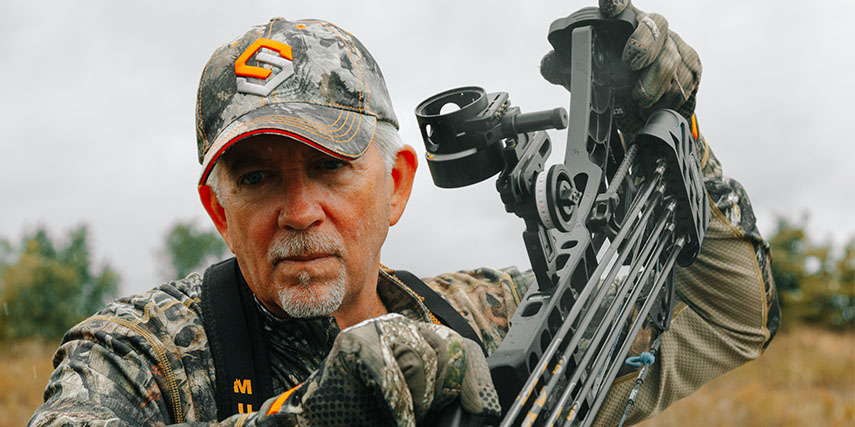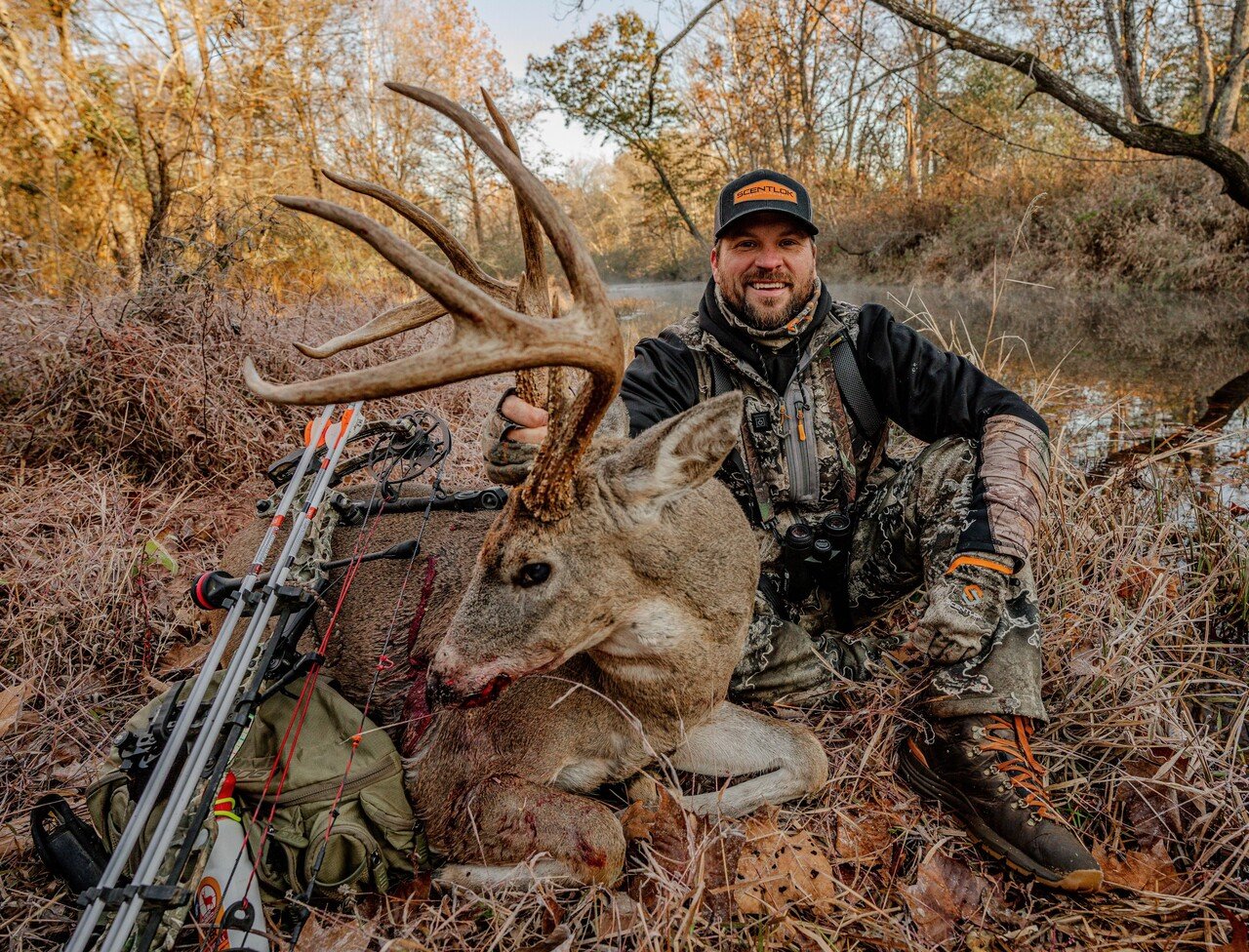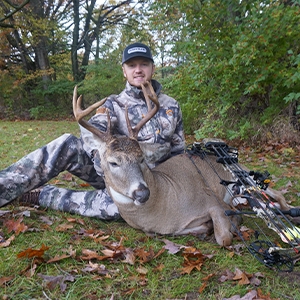While recently visiting with Terry Drury of Drury Outdoors to talk late-season deer hunting tactics, I had to ask about his giant 216” Missouri monster. If you haven’t already watched the sneak peek on Drury’s Deer Cast or their YouTube channel, you must see this massive buck, Terry’s largest buck to date.
Drury explained the history that they had the past few years with the giant buck. From the moment they first noticed that this buck had the potential to be an exceptional deer to when Drury farm manager Forest found the buck’s unusual sheds, they knew this deer was worth waiting for. “Forest found his sheds and noticed that he had shed his antlers hard, meaning they had been knocked off or broke off sooner than normal,” explained Terry. They both predicted that the buck might sport a different-looking rack on one side the following year due to unusual shedding. They were right; the buck was weak on that side the following year. However, fast forward to the summer of 2023, and the buck had exploded into a mega-giant.
After massive growth from last year, Drury set his sights on the enormous buck as his number-one hit-list deer for the fall hunting season. Terry shared that he and Forrest hunted one area, much more than they usually would, due to his repetitive patterns and his prominent massive rack. Finally, after several attempts and close encounters, Terry scored on his largest buck to date, capitalizing on an ending to several memorable chapters with a unique animal.
Even though Terry harvested his giant buck in mid-October, one might think he wouldn’t have as much enthusiasm for the upcoming late season. Wrong, Drury says he and his brother Mark have become fans of late season hunting from many years of successfully hunting mature bucks. When talking about his October giant, Terry says they spent extensive time hunting one area, which is not typical for his hunting style. However, when sharing tips for hunters to score on a mature buck during the latter portion of the season, Terry states that spending as much time in the stand as possible is crucial when trying to find a mature buck on his feet late in the year.

Late Season Food Sources
Late-season deer hunting can be a rewarding endeavor, primarily when focusing on food sources. Terry Drury emphasizes these locations' importance due to Mother Nature's harsh impact on food sources this year. Insufficient rainfall has created a challenging environment, making late-season food sources critical. These areas become essential because they provide sustenance for deer, especially during the colder months. The availability of green food sources is particularly crucial during this time, offering the necessary nutrition for deer survival.
Understanding deer behavior is key when hunting near food sources. Drury points out that deer tend to bed close to cover near food sources. This behavior aligns with their nature as browsers, making morning hunts more effective. Arriving early before first light increases the chances of catching deer in their natural feeding patterns near these food sources. For late-season hunting, Terry Drury relies on Mossy Oak Biologic radishes, turnips, and other late-season seed mixtures. He stresses the significance of food, stating that it plays a pivotal role in late season hunting success. These specific seed mixtures are designed to attract and sustain deer during the late season, providing an additional advantage for hunters.
Regarding late season hunting strategies, Drury advocates for all-day sits, especially when positioned over food sources. ScentLok and scent control are highlighted as important elements when entering and exiting stand locations. “ScentLok offers the most comfortable and best-fitting clothing on the market, allowing hunters to stay comfortable and increase the likelihood of all-day sits,” says Terry.

Second Rut
Addressing the concept of the second rut, Drury predicted that it could surpass the first rut in terms of activity. The second rut refers to a secondary breeding period for deer that occurs later in the season. While recently on a late-season hunt, Drury noticed signs of the second rut, with an instance of five bucks pursuing a single doe. This phenomenon is driven by does that did not conceive during the first rut coming into estrus again. Drury mentions that several factors can affect late-season buck movement. A full moon can trigger does to go into estrus, and the timing of the hunters' moon can impact deer patterns. Weather conditions, especially cold patterns, often influence deer behavior. Drury said that a forecasted warming trend is expected in mid-December, which will likely be an excellent time for deer to be up on their feet.
As for the second rut, Drury stresses the importance of all-day sits during this period. Midday becomes crucial when seeking second rut bucks, and he encourages hunters to take advantage of this time. Given the unpredictability of the appearance of second rut bucks, Drury advises hunters to maximize their time in the field during this phase. Understanding food sources and recognizing the hints of the second rut can significantly enhance late-season hunting success.














